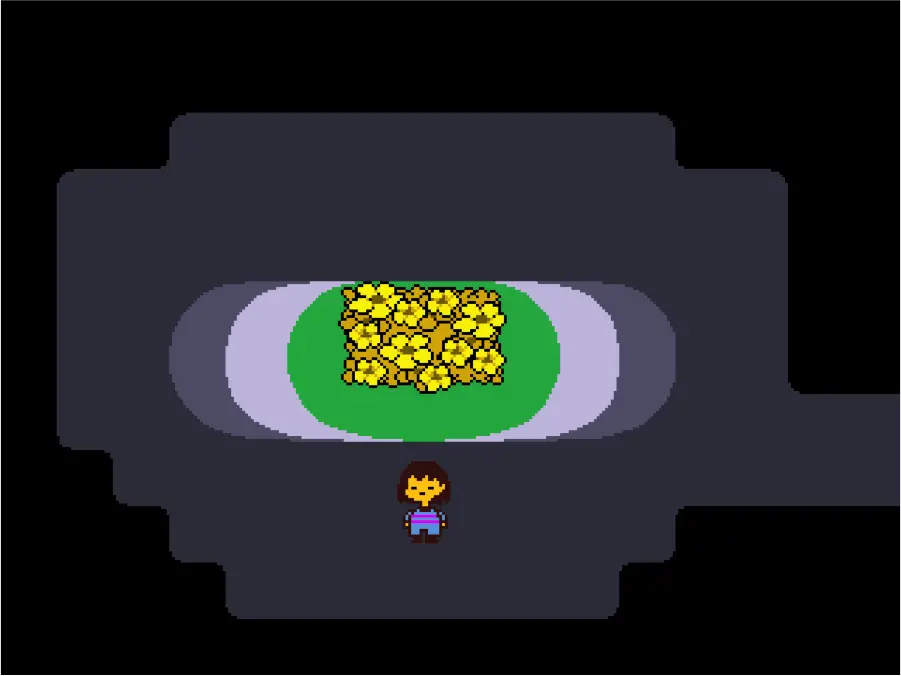Undertale is the Perfect Example of Indie Game Excellence
Look-wise, the game has an old-school feel similar to Super Mario Bros and Legend of Zelda.
By Natalie Hays, Texas State University
In the multibillion-dollar gaming industry, a stunningly beautiful game is always a hard hitter in the market.
Typically, a game made by an AAA franchise has production quality so high that characters have visible pores and landscapes looks like Ansel Adams prints. Despite the occasional glitch or hiccup, the games are gorgeous.
AAA games are made by well-known companies and are advertised months before their release. They’re the titles you recognize and the names you know well. Microsoft releases a new Halo every few years; EA backs the Battlefront series alongside Mass Effect and Dragon Age, and Bethesda has powerhouses in Elder Scrolls and Fallout.
These big budget games tend to be the top sellers each year when it comes to units sold, but what about the games that aren’t made by big companies?
Enter the indie game scene.
Indie game developers aren’t as big as their AAA counterparts; in fact, sometimes it’s just a one-person project. Most developers are composed of a small team that’s worked together to make a game, but the people involved can be anything from a group of friends to a squad of strangers brought together by a good game concept.
Since they don’t get big name producers to help fund their games, indie games go another route to bankroll their ideas.
Every day, video games are being pitched to people through avenues like Steam Greenlight, Kickstarter and Gofundme in the hope that someday their creations will reach the video game market.
Due to the lack of funding, many don’t make it. Those that due make it are often way behind deadline. Fortunately, it’s no skin off the investors’ backs because they don’t have to pay a dime if the game doesn’t meet its financial goal.
Still, while backing a project is a show of faith in its developers, many game companies keep getting their release dates pushed back because of money issues. The result is that investors and casual gamers end up waiting a long time for games, all the while hoping that the wait will be worth it.
But what do indie games even look like?
Behold: Undertale.
Funded over ten times over its original goal, Undertale became available to play on September 15, 2015, through the digital distribution platform Steam. The project launched on June 24, 2013, and had an estimated release date of August 2014. What’d I say? Delays happen.
But at ten dollars for a digital download upon its release, waiting wasn’t too bad. Toby Fox posted updates on his Kickstarter campaign throughout production, so backers were kept up to date. This kind of communication between producer and investors is just one example of the personal connection that indie games foster that conventional games lack.
So how does Undertale measure up?
Okay, sure, it’s not a hyper-realistic open-world game where you can see a bead of sweat drip down the forehead of the protagonist, but that’s not to say that it isn’t beautiful in its own right.
Undertale hearkens back to the simplicity of yesteryear gaming. Look-wise, the game has an old-school feel similar to Super Mario Bros and Legend of Zelda. As a result, it leaves the player feeling a bit nostalgic. Unlike its AAA cousins, Undertale doesn’t rely on a complicated, expensive game engine to create its environment.
Undertale also resembles some classic role-playing games like Earthbound in its game mechanics. You play as a little kid who’s fallen into a new world of monsters and has to find a way out.
The fallen human runs into a variety of monsters along his journey.
The best part about it, though? You don’t have to fight everything.
Interaction in Undertale is highly encouraged, and it leads to some of the best narrative lines in the game.
Example: A “lesser guard dog” appears! What do you do? Attack the dog or pet him? Petting the dog leads the dog to get so excited that it forgets why it even attacked you in the first place. You spare the lesser guard dog and move along the journey.
Plus, the player can take this approach with every single enemy, even bosses! What’s better is that each encounter with a monster has unique nonviolent options depending on the enemy. It’s a new approach, and one that’s really refreshing in a video game universe oversaturated with violence.
If the pacifist vibe isn’t your style, you can always choose to be as violent as you want. Don’t go thinking that there aren’t consequences to those actions though, as each ending of Undertale is dependent on how you play.
Not killing anyone versus killing everyone on sight creates a vastly different ending, and variations of your violence also lend themselves to different outcomes. These endings also affect any new game you decide to play, and the characters will recognize those actions. It’s interesting to see how a violent past playthrough can make everyone weary of your return.
In a nutshell, Undertale is incredibly charming. It’s quirky Internet humor with a bizarre twist. The characters are weirdly likable and the jokes that run through the game vary from puns to dry wit. The game laughs at itself sometimes and recognizes some of the weird situations it puts you in for the sake of a joke.
Undertale has humor, optional violence, a classic video game vibe, and it’s cheap. What doesn’t it have that an AAA game does? Advertising, and that’s really it. But that doesn’t mean the Undertale hasn’t sold its fair share of copies.
With a whopping 800,000 copies owned and counting, Undertale has far exceeded its original Kickstarter backer total. Its popularity has spread through the gaming community online, and even though it doesn’t have TV spots like its AAA cousins, it’s still measured up well.
The industry is still propelled by the big name game developers, sure, but that doesn’t mean smaller indie developed games aren’t worth the money.
Plenty go after the old 8 or 16-bit style when it comes to their design, which strike a nostalgic cord that AAA games can’t touch. It takes you back to when you were a kid with a Nintendo NES system or a Gameboy, combining the gameplay we loved then with the humor we love now.


















I will have to look into this game. I played (and still do from time to time) Mario and Zelda all the time. If Undertale is closely related, I am going to give it a whirl. Thanks for sharing!
You share a lot of information. I learn a lot of thinks now. I am a Mario player and i play it from my childhood. I saw many video on Undertale it’s good. I started to play Undertale i thinks it will turn my favorite. justforgamer.net